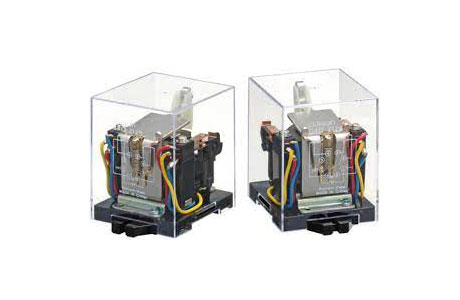Key Takeaway
An SPST relay, or Single-Pole Single-Throw relay, is a type of electrical switch. It has one input and one output, meaning it controls a single circuit. When activated, the relay either opens or closes this circuit, acting like a simple on-off switch. This type of relay is commonly used for straightforward applications where a single connection needs to be made or broken. SPST relays are essential in various electronic and electrical systems for controlling power without manual intervention. They are reliable, easy to understand, and widely used in many basic control circuits.
Definition and Working Principle
An SPST relay consists of an electromagnet, an armature, and a set of contacts. When an electric current flows through the coil, it generates a magnetic field that attracts the armature. This movement closes the contacts, completing the circuit and allowing current to pass through. When the coil is de-energized, the magnetic field dissipates, and a spring returns the armature to its original position, opening the contacts and breaking the circuit.
In essence, an SPST relay functions as an electrically operated switch. Its simplicity makes it ideal for applications where a straightforward on-off control is needed. The relay’s ability to isolate different parts of a circuit adds an extra layer of safety and control, making it a valuable component in many electrical systems.

Applications of SPST Relays
SPST relays are used in a variety of applications due to their simplicity and reliability.
Home Appliances: These relays are found in devices like washing machines, refrigerators, and air conditioners, controlling various functions such as motors and compressors.
Automotive Systems: In vehicles, SPST relays control lights, horns, and other electrical accessories, ensuring reliable operation and easy troubleshooting.
Industrial Equipment: In industrial settings, they are used to control machinery, motors, and other heavy equipment, providing robust and dependable switching.
Electronic Circuits: SPST relays are also used in low-power electronic circuits for switching signals and controlling small loads.
Their wide range of applications highlights their versatility and importance in both everyday and specialized electrical systems.
Advantages and Disadvantages
SPST relays offer several advantages that make them suitable for various applications:
Simplicity: Their straightforward design makes them easy to understand, use, and troubleshoot.
Reliability: With fewer moving parts and a robust design, SPST relays provide dependable operation over long periods.
Isolation: They offer electrical isolation between the control and power circuits, enhancing safety.
However, they also have some disadvantages:
Limited Functionality: SPST relays can only perform simple on-off operations, making them unsuitable for complex control systems.
Mechanical Wear: Over time, the mechanical components can wear out, leading to potential failures.
Size: They are bulkier compared to solid-state relays, which can be a limitation in space-constrained applications.
Understanding these pros and cons helps in selecting the right relay for specific needs, ensuring optimal performance and longevity.
Installation and Wiring Guidelines
Installing and wiring an SPST relay is straightforward but requires attention to detail to ensure proper operation.
Identify Terminals: An SPST relay typically has four terminals – two for the coil and two for the contacts. Ensure you correctly identify these terminals before wiring.
Connect Coil Terminals: Connect the control voltage source to the coil terminals. This voltage energizes the coil, triggering the relay.
Wire the Contacts: Connect the load to the contact terminals. Ensure the load is within the relay’s rated capacity to avoid damage.
Check Connections: Double-check all connections to ensure they are secure and correct. Loose or incorrect connections can lead to malfunction or failure.
Following these steps ensures the relay operates correctly and safely, providing reliable switching for your application.
Common Issues and Troubleshooting
Despite their simplicity, SPST relays can encounter issues that require troubleshooting. Common problems include:
Sticking Contacts: Over time, contacts can become pitted or welded together due to arcing. Cleaning or replacing the contacts can resolve this issue.
Coil Failure: If the coil doesn’t energize, check for continuity with a multimeter. Replace the relay if the coil is open.
Incorrect Wiring: Verify all connections to ensure they are correct and secure. Incorrect wiring is a common cause of relay failure.
Mechanical Wear: Over time, the mechanical parts can wear out, leading to intermittent or failed operation. Replacing the relay is usually the best solution.
Regular maintenance and proper installation practices can minimize these issues, ensuring the relay’s long-term reliability.
Conclusion
SPST relays are simple yet powerful components that play a crucial role in various electrical systems. Their straightforward operation, reliability, and versatility make them ideal for a wide range of applications, from home appliances to industrial equipment. Understanding their working principle, applications, advantages, and potential issues will equip you with the knowledge to effectively use and troubleshoot these relays. Embrace the simplicity and reliability of SPST relays to enhance your expertise and contribute to more efficient and safe electrical systems.
